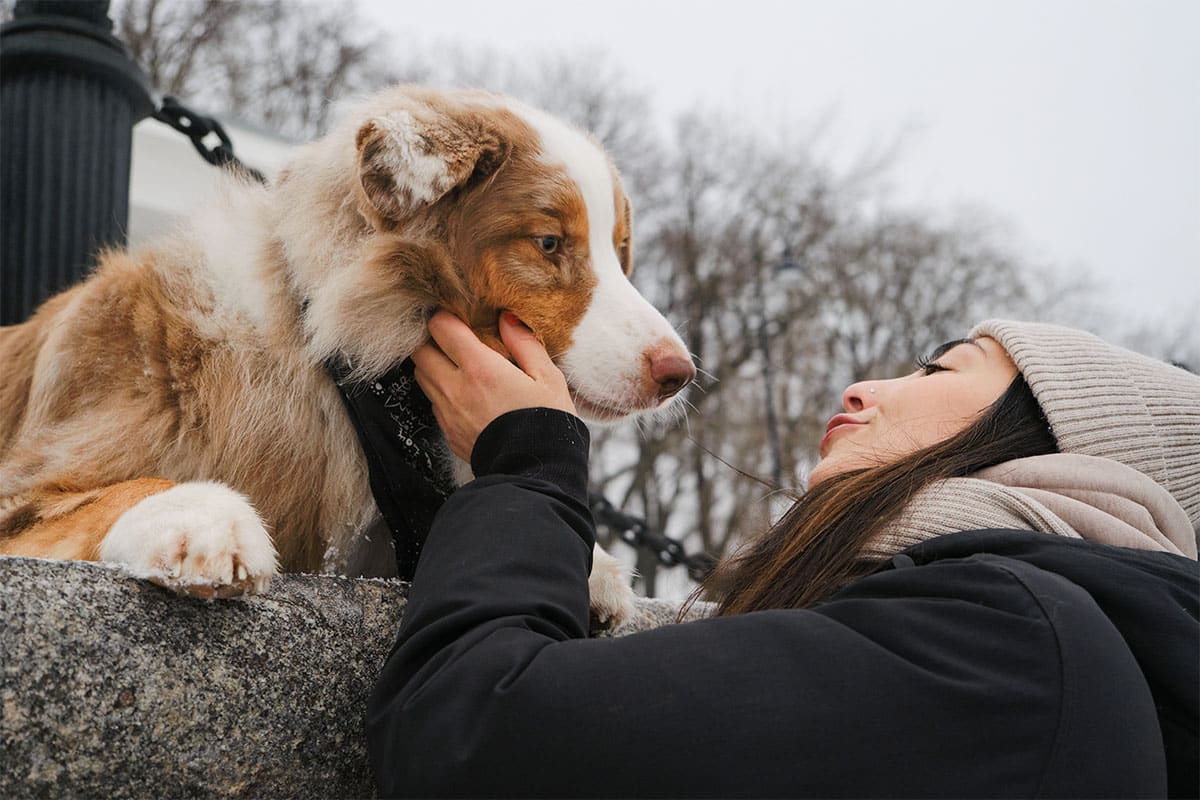“Car sickness, also referred to as motion sickness, is relatively common in puppies but can also affect older dogs. It is thought to be caused when certain types of movement affect the balance centre in the brain, combined with feelings of anxiety and stress when travelling.
“It can impact dogs at any stage of their life; however, they are more likely to develop car sickness if they aren’t used to travelling, or if they haven’t been slowly introduced to it as a puppy. Which is why early training is so important for young pups.
“The most obvious symptom of travel sickness in dogs is vomiting, but there are a few other signs your dog may be feeling anxious or nauseous. These include drooling, panting, swallowing a lot, lip licking and retching.
“While many puppies can grow out of car sickness with the right help, if not managed properly, car sickness tends to get worse over time. If your dog is showing any signs that they may have a problem travelling, it’s best to speak to your vet to work out the best plan of action for your dog, before their travel sickness has a chance of getting worse.
“Understandably, some dogs with car sickness can begin to become afraid of travelling. This may then make their symptoms worse and impact short journeys or even just trying to get your dog into the car.
Signs your dog might be afraid of travelling include:
- Barking or whimpering
- Shaking before or during travel
- Toileting in the car
- Pulling away from the car, trying to avoid the car or refusing to get inside
“There are several methods for treating car sickness. Anti-sickness medication is sometimes a good short-term solution if your vet advises this option, but for the best long-term results, we’d always advise helping your dog relearn that travelling in the car doesn’t need to be scary, so they stop being afraid and feeling sick!
“To restart travel training with your dog, stop travelling for a short time and start retraining your dog in short bursts to give them good experiences in the car. Once they’re feeling happier, you can gradually start travelling again.
“This won’t always be an immediate process, and some dogs might need a while to build up their confidence and happiness in the car again. Take the training at your dog's pace and patience is key to a successful ending!
How to train your dog to be comfortable with travelling
“The best way to prevent car sickness is to gradually get your dog used to car travel through travel training. For a new puppy it’s really important that this is started during their early socialisation period of between 4-12 weeks, which is when your pup’s brain learns about new things and is developing to be resilient and flexible. This time teaches them about the world they live in and how to adapt, cope with and enjoy normal, everyday events, such as travelling in the car.
“Remember to reward your dog at each stage and be sure your dog is confident with a step, before moving to the next. Ideally, practice each step for at least two to three days. If your dog shows any signs of being anxious, stop the training, have a break and go back to the previous step.
“Hopefully with the right steps in place, owners can have happy summer holidays with their pets. Here’s our top tips for training your dog to be comfortable with travelling:
- Start by taking your dog to the car at times they don’t need to travel. Reward them with a treat or a toy for being near the car.
- Once your dog is happy to approach and stand next to the car, start encouraging them into it with all the doors open and the engine off.
- Once they are happy going inside the car, try closing the doors or putting the engine on, remember to reward them!
- Next, get your dog used to their restraint. If your dog already has a restraint, you might want to try a new one (for example, switching from a harness to a crate or vice versa).
- Once your dog is relaxed inside the car with the engine on, try driving for one-two minutes but stop and walk home if they start to get worked up. Make sure your dog is happy on a few journeys before increasing the length.
- Build the journeys up a few minutes at a time from here, hopefully once your dog has had a few good experiences in the car, they’ll be happy to take longer journeys. Don’t forget to monitor them for any signs they’re feeling sick or anxious and take regular breaks.
There are several things you can do to make journeys that bit more comfortable for your dog:
- Use a pet-safe crate or travel harness to help them feel safe and secure
- Give them something comfortable to sit on
- Make sure they don’t slip around when the car moves
- We recommend feeding your dog at least 2-3 hours before travel
- Take regular breaks on journeys, where your dog can get out of the car, and stretch their legs.
- Walk your dog before a longer journey, so they don’t have any pent-up energy making them feel restless in the car.
- Keep your dog cool in the car, and make sure the cool air reaches your dog in the back or the boot, so the air doesn’t feel stuffy.
More information about keeping your dog happy on car rides can be found here: pdsa.org.uk/dog-motion-sickness-advice








